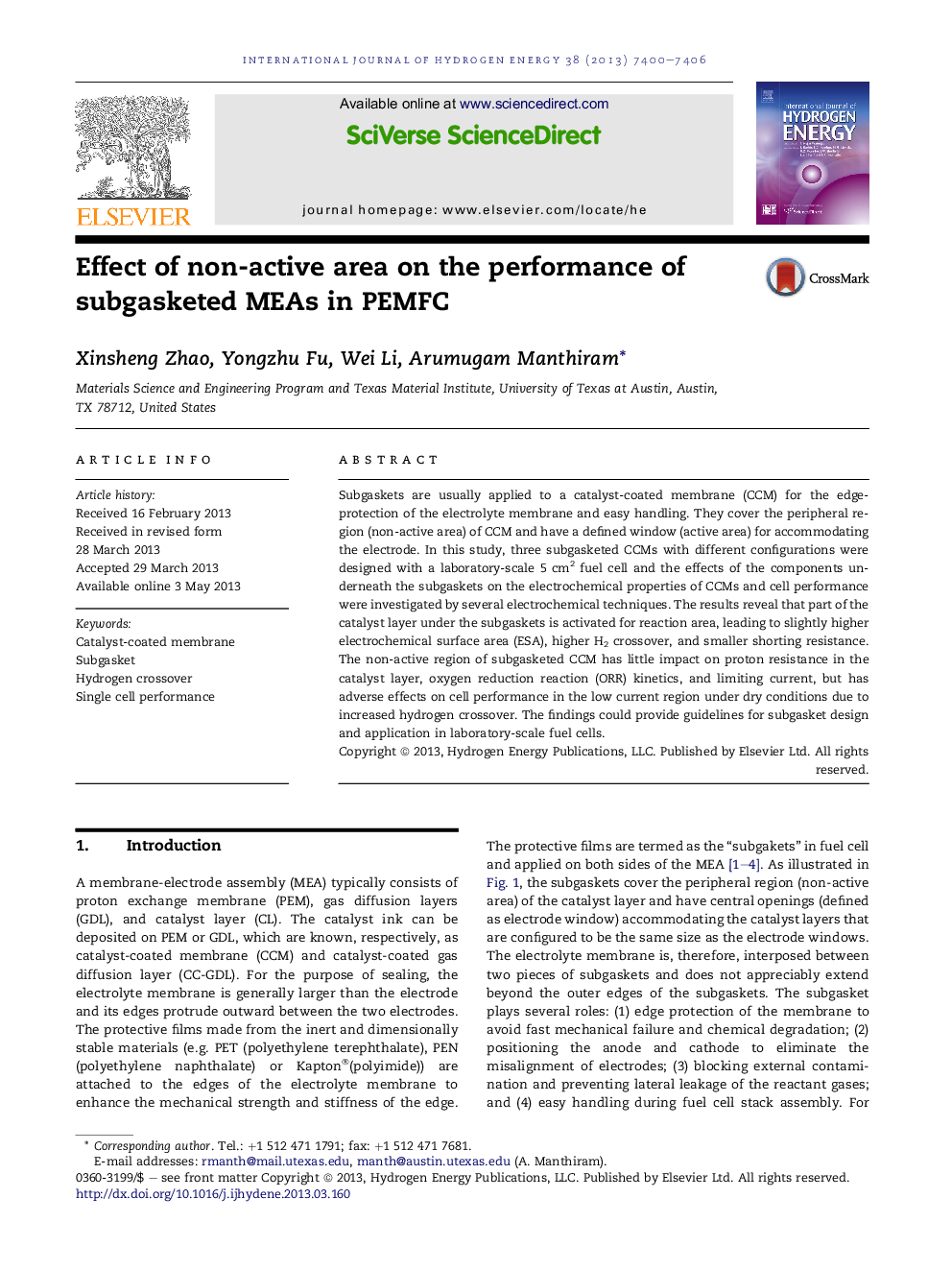| Article ID | Journal | Published Year | Pages | File Type |
|---|---|---|---|---|
| 7723076 | International Journal of Hydrogen Energy | 2013 | 7 Pages |
Abstract
Subgaskets are usually applied to a catalyst-coated membrane (CCM) for the edge-protection of the electrolyte membrane and easy handling. They cover the peripheral region (non-active area) of CCM and have a defined window (active area) for accommodating the electrode. In this study, three subgasketed CCMs with different configurations were designed with a laboratory-scale 5Â cm2 fuel cell and the effects of the components underneath the subgaskets on the electrochemical properties of CCMs and cell performance were investigated by several electrochemical techniques. The results reveal that part of the catalyst layer under the subgaskets is activated for reaction area, leading to slightly higher electrochemical surface area (ESA), higher H2 crossover, and smaller shorting resistance. The non-active region of subgasketed CCM has little impact on proton resistance in the catalyst layer, oxygen reduction reaction (ORR) kinetics, and limiting current, but has adverse effects on cell performance in the low current region under dry conditions due to increased hydrogen crossover. The findings could provide guidelines for subgasket design and application in laboratory-scale fuel cells.
Related Topics
Physical Sciences and Engineering
Chemistry
Electrochemistry
Authors
Xinsheng Zhao, Yongzhu Fu, Wei Li, Arumugam Manthiram,
